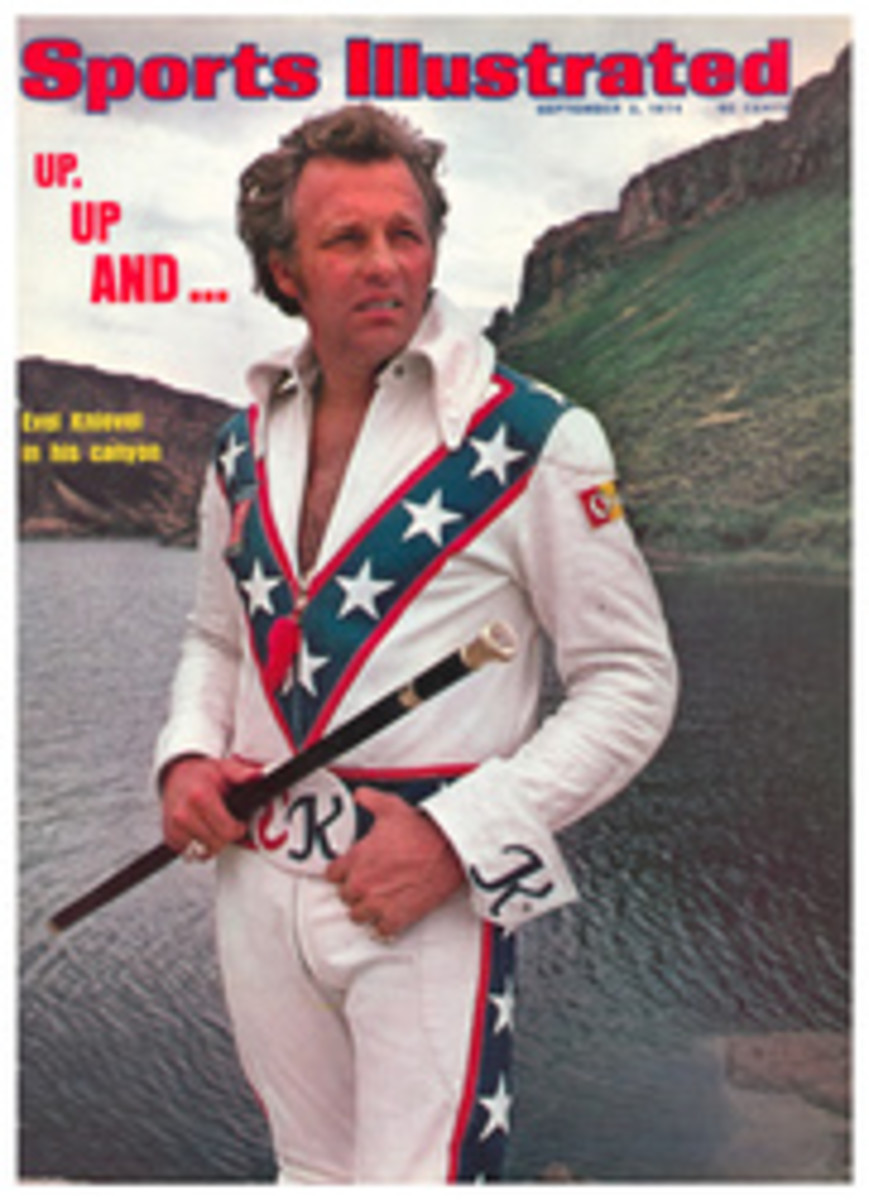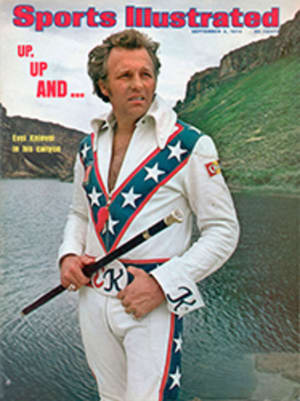
THE PENALTY FOR SUCCESS
It was a game of improbables, of goals that should have been but were not, of goals that should not have been but were. It was dumb, exciting, ridiculous, laughable, thrilling, absurd—all of those things and more. What it came to finally, down there on the steamy, slick floor of the Orange Bowl in Miami last Sunday, was an ending worthy of your local kick-the-can tournament, with 22-year-old Tony Douglas of the Los Angeles Aztecs lining the ball past Goalie Osvaldo Toriani of the Miami Toros to make the score 4-3, or maybe 8-6, depending on how you want to count it, and giving his team the North American Soccer League championship.
The game had a little something for everybody, everybody meaning the 15,507 in the stadium plus a coast-to-coast television audience. There were goals scored on headers, goals that ricocheted off defenders, goals that came when the goalie was nowhere in the area and goals that came on penalty kicks. Mostly goals that came on penalty kicks.
Forget for the moment the hour and a half of regular play that left the score 3-3. More of that later. First the dumb part. Because the game was tied, the NASL's sudden-death system went into effect—a penalty-kicking orgy, each team taking five of them with five different kickers, the team that scores the most wins. It was as if the Boston Celtics and the Milwaukee Bucks had finished game seven at 103-103 and then all had headed to the foul line for a free-throw contest.
A soccer goal is 24 feet wide and eight feet high, the ball is placed only 12 yards away on such penalty kicks and the goalie must not move his feet until the ball is on its way, thus the odds of success greatly favor the kicker. Mario Zanotti went to the line for Los Angeles and drove the ball into the left corner of the net as Toriani dived the other way. L.A. 1-0. But Miami's Roberto Aguirre tied it up, blasting the ball past Bias Sanchez, the Aztecs' goalie.
Now it was Uri Banhoffer up, and his kick skidded under a diving Toriani. L.A. 2-1. Sanchez blocked a kick by Ron Sharp, who also had had a penalty kick blocked during regulation play, but this time it was ruled that Sanchez had moved before the kick was made. Given a second try, Sharp converted for 2-2.
So it went, Luis Marotte scoring for the Aztecs, Ken Mallender for the Toros and Peter Filotes for the Aztecs to make it 4-3 Los Angeles. But then Roger Verdi, a Miami defender, sent his attempt high, too high. It cleared Sanchez but it also cleared the crossbar. The Toros were still behind and in trouble.
Now it was up to Douglas. Trying the penalty kick that would clinch the victory, he lined the ball left, only to have Toriani block it. For seconds there was joy in the Orange Bowl and Toriani looked like a prisoner with a pardon. But then Referee John Davies ruled the goalie had moved too soon and Douglas was awarded a second chance. This time he nailed a line drive into the right corner and the game was over. Los Angeles had made five goals that counted for one, Miami three that added up to none. Final corrected score, 4-3 Los Angeles.
Both Los Angeles and Miami had traveled an uphill road to the championship game. Miami was judged the favorite, perhaps because it was three years old while the Aztecs were an expansion club. In 1972 the Toros won only three of 14 games to finish an easy last in the Southern Division and, for that matter, the entire eight-team league. Last year the much-improved Toros won eight games, which was better than all but two other teams, but owing to the injustice of the league's playoff system, they were edged out by both Philadelphia and New York in the Eastern Division and thus failed to qualify for postseason play.
This year there was no stopping them as they won 15 of 20 games, earned a bye in the first round of the playoffs and beat the Dallas Tornado 3-1 to gain the final. Coach John Young was voted Coach of the Year and attendance, which was 54,000 in 1973, rose to 74,000. In the week before the game the Miami papers gave the Toros, if not as much space as the pro football Dolphins, at least some mention. John Young was still not Don Shula, nor did Steve David and Warren Archibald sound as familiar as Larry Csonka and Bob Griese, but the public was learning about them.
None of this impressed the Los Angeles Aztecs. They had beaten the Toros in their only meeting, but the Toros were quick to point out that the score was only 2-1, that the game was played in Los Angeles on a Sunday afternoon and that the night before they had been forced to play a game in San Jose. All of which, argued the Aztecs, still added up to one win for them. That, along with 12 other wins, put them at the top of the Western Division and gave them not only a playoff berth but a bye into the semifinals, where they beat Boston 2-0.
During the week leading up to the playoff it rained heavily almost every afternoon and Miami steamed in the sun and heavy air. Unfortunately, game time was scheduled for 3:30 p.m.—the evening would have been more pleasant—because television wanted it then, and the prospect of national exposure was too rich an opportunity for a struggling young professional sport to ignore. There had been no live national soccer telecast since 1968, the year some NASL executives call "The Great Disaster."
The league was founded then with 17 teams, but 12 of them folded when the season ended. It had started out with no base of popular support. No one seemed to know how the game should be televised and word quickly spread that it was a loser. First and second generation Americans from soccer countries sneered at the quality of play, and hardly anyone else cared at all. Fortunately, there were some who did care, most notably Lamar Hunt, who hung on in Dallas. Slowly the league began to revitalize, from the bottom up.
This year the NASL had eight new teams. In the last four years attendance has risen an average of 100% per team. Soccer is said to be the nation's fastest-growing team sport for schoolchildren, and, says the NASL's indefatigable commissioner, Phil Woosnam, "Those kids are starving for an American hero."
Well, perhaps Doug McMillan of the Aztecs will do. McMillan, 29, was the league's Rookie of the Year, and as much as anyone he deserved credit for the Aztec victory last week, for it was he who scored the tying goal with only 2:08 left.
McMillan started out in the game late, playing a little soccer in Scotland as a child, but his family emigrated to Ohio when he was 15, and American football became his sport. He was an all-state halfback, and he says, "Every time I got the ball I ran for a 75-yard touchdown." He wanted to be a professional but was only 5'7" and 140 pounds. So he joined the Navy, and in California he started playing soccer in the Greater Los Angeles League. He was a leading scorer, and last February Coach Alex Perolli asked him to join the Aztecs. He had a fine season, scoring 10 goals and getting 10 assists, and he displayed a hard-running European style, exceptional quickness and an uncanny ability to anticipate the ball. In the Aztecs' semifinal win over Boston he scored the second goal.
The other outstanding Aztec rookie, the first selection in the 1974 college draft, was Jose Lopez, a defender. Born in Mexico, Lopez moved to Los Angeles with his family when he was 11. He played four years of soccer at UCLA, and in three of them his team went to the NCAA finals. But all three times the Bruins lost to St. Louis University, twice in the Orange Bowl, most recently, last January, in double overtime. And now, before the game, Lopez was saying, "I think it's about time I stopped losing finals in the Orange Bowl."
For most of the afternoon it seemed as though Lopez would suffer number three. Miami Defender Ralph Wright scored the first goal on a head shot at 16:25 into the game. With that Los Angeles, which had not been able to get its attack going, suddenly caught fire. Sharp Aztec passes began to find Aztec feet that now seemed as prehensile as a shortstop's glove. At 25:10 an Aztec player was pushed and Ricardo DeRienzo scored on a penalty kick. Now it was 1-1. It stayed that way for the rest of the half, with neither team dominating. Aztec passes were short and accurate. The Toros sent long kicks downfield, to no avail.
Three minutes into the second half the Toros' Ronnie Sharp was awarded a penalty kick, an almost sure goal, and he missed. But the goalkeeper had moved before the kick, and Sharp got another try. He failed again.
Four minutes later the Aztecs had Miami in real trouble. Uri Banhoffer had the ball on his toe, and an almost open goal within spitting distance. Whap! The ball hit a goalpost and bounced back to Banhoffer's teammate, Doug McMillan. Whap! His kick bounced off the bar at the top of the cage. The game was starting to seem unreal.
And so it continued. Miami's Derek Watts fired at the Aztec goal from point-blank range and hit the crossbar. Ramon Moraldo, an Aztec defenseman, tried to clear the ball. It bounced around in front of his goal, caromed off teammate Julio Cesar Cortez, and rolled into the Aztec goal. Cortez was distraught; a Toro came up and embraced him.
Now it was 2-1 Miami. With 12:46 to go, a Los Angeles player was fouled by the Toros' Selris Figaro. It was a foul that called for a direct kick, close in but not a penalty kick. A wall of Miami players lined up in front of Banhoffer, who was designated to take the kick. His chances were not good. Banhoffer flexed his kicking leg and let go. Hard. The ball had topspin on it and it humped over the Toro line and sailed into the goal. The game was tied again.
Nobody wanted to go into tiebreakers, especially Los Angeles. The Aztecs knew that Miami had already gone that route six times this year and had won six times.
There was 3:50 left to play when a Miami midfielder named Esteban Aranguiz put his head to leather and made it 3-2. Now it looked very bad for Los Angeles. But Tony Douglas had not given up. In Miami territory, he kicked the ball to McMillan. Toriani was coming out of the goal as McMillan kicked. The ball hit Toriani's outstretched fingers and bounced back on the field. Banhoffer saw it and kicked again, but a Miami defenseman blocked it back to McMillan once more. Toriani was still outside when McMillan poked the ball into the net. The game was tied and the stage was set for soccer's version of the theater of the absurd. Listen, it could have been worse. Had no one missed, they would be kicking still.
PHOTO
Ricardo DeRienzo, who scored an Aztec goal, battles Warren Archibald for the ball.
PHOTO
L.A. Coach Perolli does a Vince Lombardi.
PHOTO
While Toriani dives to his right, Banhoffer's overtime penalty kick skids under and in.
PHOTO
The Aztec victory brings a mountain of joy.

